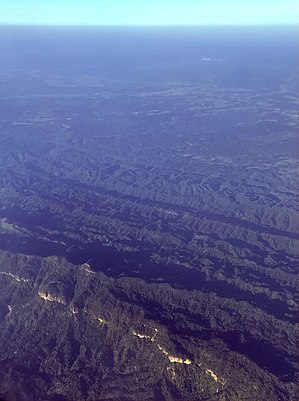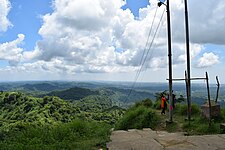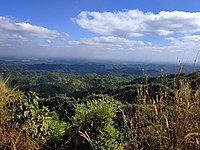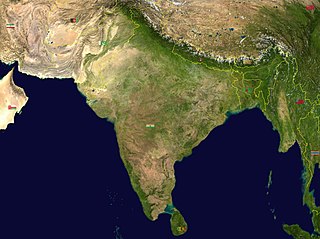
India is situated north of the equator between 8°4' north to 37°6' north latitude and 68°7' east to 97°25' east longitude. It is the seventh-largest country in the world, with a total area of 3,287,263 square kilometres (1,269,219 sq mi). India measures 3,214 km (1,997 mi) from north to south and 2,933 km (1,822 mi) from east to west. It has a land frontier of 15,200 km (9,445 mi) and a coastline of 7,516.6 km (4,671 mi).

Feni is a district situated in the southeast of Bangladesh. Historically, it was part of the larger regions of Noakhali, Comilla, Chittagong, and Tripura, and separated from Pakistan's control on December 6, 1971. As of 2022, the estimated population of the district was about 1,648,896, with the density of 1451 people .The administrative hub of the district is in Feni City, which also serves as the headquarters of Feni Sadar Upazila in the central section of the district. The original name of the district was Shamshernagar, which served as a mahakuma under the district of Noakhali, Comilla and Chittagong District until 6 December 1984. It is the 64th Number Districts of Bangladesh. The district consists of six sub-districts: Sonagazi, Fulgazi, Parshuram, Daganbhuiyan, Chhagalnaiya and Feni Sadar.

Chittagong, officially Chattogram, also known as Chatgaon, is the second-largest city in Bangladesh after Dhaka and the third largest city in the Bengal region after Dhaka and Kolkata. It is the administrative seat of the eponymous division and district. It hosts the busiest seaport on the Bay of Bengal. The city is located on the banks of the Karnaphuli River between the Chittagong Hill Tracts and the Bay of Bengal. The Greater Chittagong Area had a population of more than 5.2 million in 2022. In 2020, the city area had a population of more than 3.9 million. Even amidst heightened global uncertainty, Bangladesh has consistently demonstrated a robust history of growth and advancement.

Noakhali, historically known as Bhulua, is a district in southeastern Bangladesh, located in the Chittagong Division. It was established as district in 1821, and officially named Noakhali in 1868. Its headquarters lie in the town of Maijdee, therefore Noakhali is the only district of Bangladesh that is not named after its main town.
The Feni is a river in southeastern Bangladesh and Tripura state of India. It is a trans-boundary river that is the subject of an ongoing dispute about water rights. The Feni River originates in South Tripura district and flows through Sabroom town and then enters Bangladesh. Muhuri River, also called Little Feni, from Noakhali District joins it near its mouth. The river is navigable by small boats as far as Ramgarh, about 80 kilometres (50 mi) upstream.
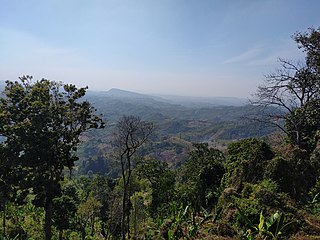
Rangamati Hill District is a district in south-eastern Bangladesh. It is a part of the Chattogram Division, and the town of Rangamati serves as the headquarters of the district. By area, Rangamati is the largest district of the country.

Rangamati is the administrative headquarter and town of Rangamati Hill District in the Chittagong Hill Tracts of Bangladesh. The town is located at 22°37'60N 92°12'0E and has an altitude of 14 metres (46 ft). It is also where Ropuiliani, a Mizo chieftess, was jailed and died, during the British rule in Mizoram.

The Geography of West Bengal, a state in eastern India, is primarily defined by plains and plateaus, with the high peaks of the Himalayas in the north and the Bay of Bengal to the south.
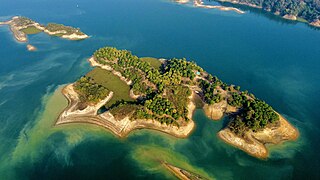
Kaptai Lake is the largest man made lake in Bangladesh. It is located in the Kaptai Upazila under Rangamati District of Chittagong Division. The lake was created as a result of building the Kaptai Dam on the Karnaphuli River, as part of the Karnaphuli Hydro-electric project. Kaptai Lake's average depth is 100 feet (30 m) and maximum depth is 490 feet (150 m).

Mirsharai Upazila is an upazila of Chattogram District in Chattogram Division, Bangladesh. It comprises two police stations and two municipalities.

Sitakunda is an upazila in the Chattogram District of Chattogram Division, Bangladesh. It includes one urban settlement, the Sitakunda Town, and 10 unions. Sitakunda is the home of the country's first eco-park, as well as alternative energy projects, specifically wind energy and geothermal power.

Tourism in Bangladesh includes tourism to World Heritage Sites, historical monuments, resorts, beaches, picnic spots, forests, tribal people, and wildlife of various species. Activities for tourists include angling, water skiing, river cruising, hiking, rowing, yachting, and sea bathing.

Chandranath Temple, located on top of the Chandranath Hill, is a famous Shakti Peeth located near Chittagong in Bangladesh where, as per Hindu sacred texts, the right arm of Deiti Sati fell. Chandranath Temple is a pilgrimage site for Hindus. Its height about 1,020 feet (310 m) above sea level.

The Buddha Dhatu Jadi is located close to Balaghata town, in Bandarban City, in Bangladesh. Dhatu are the material remains of a holy person, and in this temple the relics belong to Buddha. It is the largest Theravada Buddhist temple in Bangladesh and has the second-largest Buddha statue in the country.
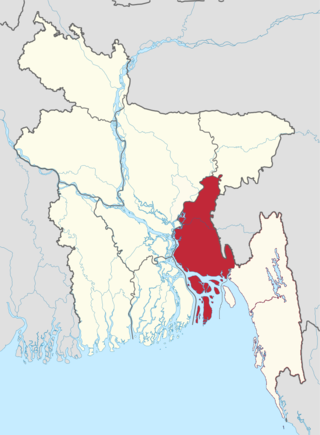
Meghna Division is a proposed administrative division within Bangladesh for the north-western parts of the existing Chittagong Division, comprising Brahmanbaria, Comilla, Chandpur, Noakhali, Feni, and Laxmipur Districts of Chittagong Division. The headquarter of the division is in Comilla. It covers the south-easternmost areas of the country, with a total area of 12,848.53 km2 (4,960.85 sq mi) and a population at the 2011 census of 16,708,000.

Northeast India consists of the eight states Arunachal Pradesh, Assam, Manipur, Meghalaya, Mizoram, Nagaland, Sikkim and Tripura. Tourism in this area is based around the unique Himalayan landscape and culture distinct from the rest of India.
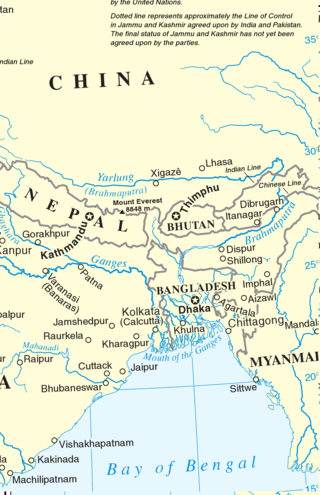
Eastern South Asia is a geographical area in the Southern Asian subregion, precisely the eastern region of the subcontinent. It includes the countries of Bangladesh, Bhutan, Nepal and India. Geographically, it lies between the Eastern Himalayas and the Bay of Bengal. Two of the world's largest rivers, the Ganges and the Brahmaputra, flow into the sea through the Bengal region. The region includes the world's highest mountainous terrain and the world's largest delta, and has a climate ranging from alpine and subalpine to subtropical and tropical. Since Nepal, Bhutan, and northeast India are landlocked, the coastlines of Bangladesh and East India serve as the principal gateways to the region.

Shahasradhara Waterfall Located in Sitakunda Upazila of Chittagong District of Bangladesh.

The Greater Noakhali region predominantly includes the districts of Noakhali, Feni and Lakshmipur in Bangladesh, though it has historically also included Bhola, Sandwip and some southern parts of Tripura in India and southern Comilla. The history of the Noakhali region begins with the existence of civilisation in the villages of Shilua and Bhulua. Bhulua became a focal point during the Buddhist and Hindu kingdoms of Pundra, Harikela and Samatata leading it to become the initial name of the region as a whole. The medieval Kingdom of Bhulua enjoyed autonomy under the Twipra Kingdom and Bengal Sultanate before being conquered by the Mughal Empire. At the beginning of the 17th century, Portuguese pirates led by Sebastian Gonzales took control of the ara but were later defeated by Governor Shaista Khan. Affected by floodwaters, the capital of the region was swiftly moved to a new place known as Noakhali, from which the region presently takes its name. By 1756, the British East India Company had dominated and started to establish several factories in the region. The headquarters was once again moved in 1951, to Maijdee, as a result of Noakhali town vanishing due to fluvial erosion.

